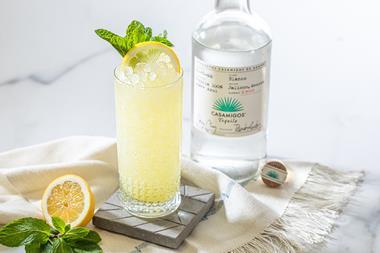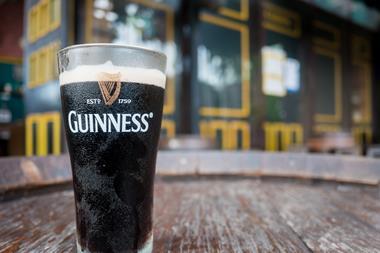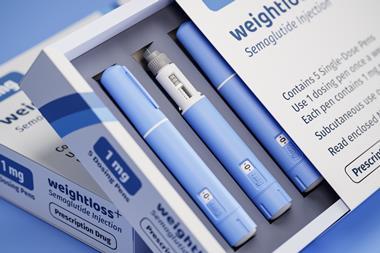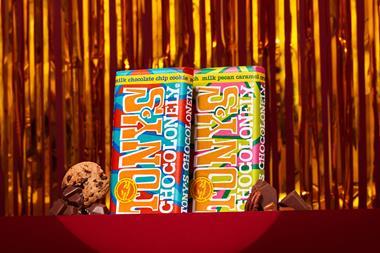It wasn't the pricing nightmare it can be, but Christmas wasn't a vintage sales period either. Graham Holter separates the flat categories from the fizzing
Christmas is endured rather than enjoyed by the drinks trade, which seems to spend most of the year preparing for a sales period that routinely descends into a pricing bloodbath from which few real winners emerge.
The portents for Christmas 2008 were particularly bleak, thanks to the worsening economy and an off-trade wine market that had slipped into decline, while beer teetered on the brink. Few expected to be reporting bumper sales come January. Yet the picture that has emerged is of a take-home sector that performed better than even some optimists had dared to imagine.
"With all the doom and gloom around, the off-trade held up pretty well at Christmas," says Nielsen analyst Gavin Humphreys. "Value was well ahead of volume, which suggests the December duty increase was passed through."
Extra shopping days
That’s not to say it will be remembered as a vintage year. Nielsen confirms that in the eight weeks to 27 December volumes were down 1%, while value – driven by the year’s second duty increase on beers and wines – grew by 4%.
But with Christmas falling on a Thursday, consumers were presented with two extra shopping days compared with 2007, creating a last-minute sales surge after the nervous, quiet weeks in the middle of December.
“Overall, Christmas was left very late, with the last two weeks accounting for 6.8% of annual value – up from 6.5% in 2007,” says Humphreys. “However, there are some category differences here, and while spirits had the biggest uplift at Christmas, the last two weeks – representing 8.6% of annual value – were on par with Christmas 2007.”
On face value, Nielsen’s spirits stats do not look encouraging for Diageo, which had been bigging up Christmas as a massive growth opportunity for the sector. The eight-week chart shows decline or stagnation for its key brands Smirnoff Red Label, Baileys, Bell’s and Gordon’s.
However, says Diageo grocery channel director Andy Adams, this was largely due to strong comparatives in 2007. Measure sales over a 12-week period rather than eight and the picture looks somewhat different, he adds.
“We had a strong Christmas in the off-trade and even stronger in the biggest grocers,” he insists. “Spirits added £63m of retail sales value in the grocers, of which Diageo delivered £21m. This is our second very strong Christmas back-to-back.
“We suspected that in the tougher economic climate people would pull their shopping forward, so we put a lot of focus into generating growth in the early period.”
What made the big difference for Diageo this Christmas was that it brought in heavyweight sampling, pushed more gift packs out early and ensured more spirits were located outside the spirits aisle earlier, Adams says.
“We had a big programme of sampling, particularly focused on long mixed drinks. We encouraged retailers to take on pictorial point of sale,” he says. “There was a good take-up on that, particularly in Morrisons where there was a full event around spirits. Retailers really drove this very hard.”
Adams admits that some of the growth was driven by deep discounting, but points out that the average price in the key grocers was up 3% over the 12 weeks on its top four brands. “This was a hugely successful result,” he says. “Focusing on early activity has worked well – perhaps more strongly than we expected.”
Humphreys agrees that spirits sales should be evaluated over a longer period. “For spirits we need to look at a 12-week period with deals starting in October,” he says. “This changes the eight-week picture, where we see volume down 2% and value up 4% to one where volume is up 1% and value up 7% – quite a difference. Diageo drove its promotions in October and it changes the overall brand picture quite dramatically.”
Early promotions
In the eight-week analysis Smirnoff’s value sales were down 2%, for instance, but in the12-week picture this turns into a 9% uplift. Baileys, meanwhile, moves from a no-change situation to a 4% increase, suggesting Diageo’s October promotions made an impact. If spirit sales were stronger than they initially looked, wine sales were stronger than initially expected.
Over the past year or so, the sector has been plagued by duty increases, rising fixed costs and deflationary pressure from the supermarkets, which fell to a new nadir as far as suppliers were concerned in the now seemingly ubiquitous three-for-£10 deals. At the end of October, annual wine volumes had gone into decline, notes Humphreys.
“But Christmas has been better than expected for the category, with volume up 2% over eight weeks and value up 6%, leaving the annual volume picture flat, with annual value growth of 4%,” he says, adding thtat heavy promotional activity paid off. “The key price bracket was £3.50 to £4, which accounted for 28% of value sales, while the £4-to-£4.50 bracket saw the biggest value growth, at 61% . This is where a number of the half-price offers landed and clearly gained traction with promotionally conditioned consumers.”
Winners and losers
Blossom Hill leapfrogged Hardys thanks to a 7% increase in value sales. But Gallo Family Vineyards stole a march on both its rivals, moving from third position to top of the table on the back of 12.1% growth.
Lindemans was one of the strongest performers with sales up 37% on last year over the eight week period. Foster’s EMEA stablemate Wolf Blass also increased its sales on 2007. “We are delighted with our performance through 2008, and particularly at Christmas,” says Neil Barker, UK commercial director for Foster’s EMEA, which reports “double-digit full-year value growth” for the company’s core brands.
“This has been driven by strong, consistent support allied to distribution gains and breakthrough category innovation initiatives such as the launch of Lindemans Chile and South Africa, and lower-alcohol Lindemans Early Harvest.
We have sought to work closely with our customer base to reflect the increasing importance of value through the credit crunch.”
It wasn’t plain sailing for Constellation, however. John Mills, newly appointed senior vice president for European sales, flags up increased sales for Echo Falls and Banrock Station but cannot hide from a poor Christmas showing from major brands Hardys and Stowells, which saw slumps in value of 19.9% and 26.9% respectively.
“Volume was down on some of our products over Christmas, but up over the year as a whole,” he says. “We lost a couple of Christmas promotional slots we had last year, which affected our volumes on products such as Hardys Crest and Stowells.”
The picture for beer
While the picture was mixed for some of the big wine brands, beer’s performance was indifferent compared with cider, wines and spirits. On the plus side, there was some evidence that trade pre-ordering before the 1 December duty hike encouraged an uplift in volume sales a little earlier than normal, notes Nielsen.
“We have seen the brewers move from 18-packs to 15-packs and from 24s to 18s. Foster’s, Carling, Carlsberg and Strongbow have featured strongly with 15s, and Stella and Beck’s with 18-pack bottles,” says Humphreys. “This helped lift the overall price per litre for lager in multiple grocers from £1.40 a litre in Christmas 2007 to £1.52 in 2008 – representing some value coming back into the marketplace at last.”
However, premium lager under-performed. The most serious casualty among the top 10 players was Kronenbourg, although stablemate Foster’s turned in a creditable performance to eclipse the subdued Carling.
Stella Artois continued its decline, but remains the clear market leader. Fellow InBev brand Beck’s achieved a 65% sales increase, aided by half-price deals and attractive multibuys. The stronger performers helped Beck’s grow its share of the supermarket lager market three percentage points to 7.8% over the year, claims the company.
Heavy promotional activity once again played a key role in driving volume sales across the BWS category. But while last year retailers were bickering over who had wasted the most money on Christmas promotions, this year the talk is less about respective market share and more about how the big four supermarkets have stolen an even bigger slice of the BWS market from their c-store rivals.
Impulse takes a hit
Nielsen reports that there was a 6% value increase in alcohol sales at the multiples over the eight-week Christmas period, while impulse retailers registered a 2% fall in BWS takings. The multiples now take almost three quarters of Christmas sales, and it was their out-of-town formats that dominated, according to Humphreys.
Tesco confirms that the supermarkets changed their tack for Christmas 2008.
"One of the differences about this Christmas is that most retailers ploughed their own furrow and did what was best for their own customers, working with their suppliers," says Dan Jago, Tesco's head of BWS.
"We made sure we were competitive in relation to the marketplace but stuck to our plan pretty closely and had a pretty good Christmas. Consumers did very well out of Christmas this year and if they're happy with the category at a difficult trading time like this then we did what was expected of us.
"Unquestionably the most popular offer [in wine] was three-for-£10, which has resonated with many consumers and given them what they're looking for in the current climate."
A merry-ish Christmas
Overall, Christmas was not the disaster many in the trade were fearing. But could that have been because, with recession looming, consumers were looking to go out with a bang before battening down the hatches for 2009? Might the festive sales figures represent a worrying last hurrah, rather than a signal that all is well in the drinks aisles?
No, says Jago unequivocally. “We have talked to our customers and their feedback was they didn’t treat Christmas markedly differently than a normal Christmas, although they were more selective about buying what represented great value for money, even if it was a premium product,” he says.
“I think they were prepared to shop around more than they would have done in the past.”
Not a sparkling Christmas, then, but nor was it the carnage some had predicted. 2009, however, could be a different story.
Christmas is endured rather than enjoyed by the drinks trade, which seems to spend most of the year preparing for a sales period that routinely descends into a pricing bloodbath from which few real winners emerge.
The portents for Christmas 2008 were particularly bleak, thanks to the worsening economy and an off-trade wine market that had slipped into decline, while beer teetered on the brink. Few expected to be reporting bumper sales come January. Yet the picture that has emerged is of a take-home sector that performed better than even some optimists had dared to imagine.
"With all the doom and gloom around, the off-trade held up pretty well at Christmas," says Nielsen analyst Gavin Humphreys. "Value was well ahead of volume, which suggests the December duty increase was passed through."
Extra shopping days
That’s not to say it will be remembered as a vintage year. Nielsen confirms that in the eight weeks to 27 December volumes were down 1%, while value – driven by the year’s second duty increase on beers and wines – grew by 4%.
But with Christmas falling on a Thursday, consumers were presented with two extra shopping days compared with 2007, creating a last-minute sales surge after the nervous, quiet weeks in the middle of December.
“Overall, Christmas was left very late, with the last two weeks accounting for 6.8% of annual value – up from 6.5% in 2007,” says Humphreys. “However, there are some category differences here, and while spirits had the biggest uplift at Christmas, the last two weeks – representing 8.6% of annual value – were on par with Christmas 2007.”
On face value, Nielsen’s spirits stats do not look encouraging for Diageo, which had been bigging up Christmas as a massive growth opportunity for the sector. The eight-week chart shows decline or stagnation for its key brands Smirnoff Red Label, Baileys, Bell’s and Gordon’s.
However, says Diageo grocery channel director Andy Adams, this was largely due to strong comparatives in 2007. Measure sales over a 12-week period rather than eight and the picture looks somewhat different, he adds.
“We had a strong Christmas in the off-trade and even stronger in the biggest grocers,” he insists. “Spirits added £63m of retail sales value in the grocers, of which Diageo delivered £21m. This is our second very strong Christmas back-to-back.
“We suspected that in the tougher economic climate people would pull their shopping forward, so we put a lot of focus into generating growth in the early period.”
What made the big difference for Diageo this Christmas was that it brought in heavyweight sampling, pushed more gift packs out early and ensured more spirits were located outside the spirits aisle earlier, Adams says.
“We had a big programme of sampling, particularly focused on long mixed drinks. We encouraged retailers to take on pictorial point of sale,” he says. “There was a good take-up on that, particularly in Morrisons where there was a full event around spirits. Retailers really drove this very hard.”
Adams admits that some of the growth was driven by deep discounting, but points out that the average price in the key grocers was up 3% over the 12 weeks on its top four brands. “This was a hugely successful result,” he says. “Focusing on early activity has worked well – perhaps more strongly than we expected.”
Humphreys agrees that spirits sales should be evaluated over a longer period. “For spirits we need to look at a 12-week period with deals starting in October,” he says. “This changes the eight-week picture, where we see volume down 2% and value up 4% to one where volume is up 1% and value up 7% – quite a difference. Diageo drove its promotions in October and it changes the overall brand picture quite dramatically.”
Early promotions
In the eight-week analysis Smirnoff’s value sales were down 2%, for instance, but in the12-week picture this turns into a 9% uplift. Baileys, meanwhile, moves from a no-change situation to a 4% increase, suggesting Diageo’s October promotions made an impact. If spirit sales were stronger than they initially looked, wine sales were stronger than initially expected.
Over the past year or so, the sector has been plagued by duty increases, rising fixed costs and deflationary pressure from the supermarkets, which fell to a new nadir as far as suppliers were concerned in the now seemingly ubiquitous three-for-£10 deals. At the end of October, annual wine volumes had gone into decline, notes Humphreys.
“But Christmas has been better than expected for the category, with volume up 2% over eight weeks and value up 6%, leaving the annual volume picture flat, with annual value growth of 4%,” he says, adding thtat heavy promotional activity paid off. “The key price bracket was £3.50 to £4, which accounted for 28% of value sales, while the £4-to-£4.50 bracket saw the biggest value growth, at 61% . This is where a number of the half-price offers landed and clearly gained traction with promotionally conditioned consumers.”
Winners and losers
Blossom Hill leapfrogged Hardys thanks to a 7% increase in value sales. But Gallo Family Vineyards stole a march on both its rivals, moving from third position to top of the table on the back of 12.1% growth.
Lindemans was one of the strongest performers with sales up 37% on last year over the eight week period. Foster’s EMEA stablemate Wolf Blass also increased its sales on 2007. “We are delighted with our performance through 2008, and particularly at Christmas,” says Neil Barker, UK commercial director for Foster’s EMEA, which reports “double-digit full-year value growth” for the company’s core brands.
“This has been driven by strong, consistent support allied to distribution gains and breakthrough category innovation initiatives such as the launch of Lindemans Chile and South Africa, and lower-alcohol Lindemans Early Harvest.
We have sought to work closely with our customer base to reflect the increasing importance of value through the credit crunch.”
It wasn’t plain sailing for Constellation, however. John Mills, newly appointed senior vice president for European sales, flags up increased sales for Echo Falls and Banrock Station but cannot hide from a poor Christmas showing from major brands Hardys and Stowells, which saw slumps in value of 19.9% and 26.9% respectively.
“Volume was down on some of our products over Christmas, but up over the year as a whole,” he says. “We lost a couple of Christmas promotional slots we had last year, which affected our volumes on products such as Hardys Crest and Stowells.”
The picture for beer
While the picture was mixed for some of the big wine brands, beer’s performance was indifferent compared with cider, wines and spirits. On the plus side, there was some evidence that trade pre-ordering before the 1 December duty hike encouraged an uplift in volume sales a little earlier than normal, notes Nielsen.
“We have seen the brewers move from 18-packs to 15-packs and from 24s to 18s. Foster’s, Carling, Carlsberg and Strongbow have featured strongly with 15s, and Stella and Beck’s with 18-pack bottles,” says Humphreys. “This helped lift the overall price per litre for lager in multiple grocers from £1.40 a litre in Christmas 2007 to £1.52 in 2008 – representing some value coming back into the marketplace at last.”
However, premium lager under-performed. The most serious casualty among the top 10 players was Kronenbourg, although stablemate Foster’s turned in a creditable performance to eclipse the subdued Carling.
Stella Artois continued its decline, but remains the clear market leader. Fellow InBev brand Beck’s achieved a 65% sales increase, aided by half-price deals and attractive multibuys. The stronger performers helped Beck’s grow its share of the supermarket lager market three percentage points to 7.8% over the year, claims the company.
Heavy promotional activity once again played a key role in driving volume sales across the BWS category. But while last year retailers were bickering over who had wasted the most money on Christmas promotions, this year the talk is less about respective market share and more about how the big four supermarkets have stolen an even bigger slice of the BWS market from their c-store rivals.
Impulse takes a hit
Nielsen reports that there was a 6% value increase in alcohol sales at the multiples over the eight-week Christmas period, while impulse retailers registered a 2% fall in BWS takings. The multiples now take almost three quarters of Christmas sales, and it was their out-of-town formats that dominated, according to Humphreys.
Tesco confirms that the supermarkets changed their tack for Christmas 2008.
"One of the differences about this Christmas is that most retailers ploughed their own furrow and did what was best for their own customers, working with their suppliers," says Dan Jago, Tesco's head of BWS.
"We made sure we were competitive in relation to the marketplace but stuck to our plan pretty closely and had a pretty good Christmas. Consumers did very well out of Christmas this year and if they're happy with the category at a difficult trading time like this then we did what was expected of us.
"Unquestionably the most popular offer [in wine] was three-for-£10, which has resonated with many consumers and given them what they're looking for in the current climate."
A merry-ish Christmas
Overall, Christmas was not the disaster many in the trade were fearing. But could that have been because, with recession looming, consumers were looking to go out with a bang before battening down the hatches for 2009? Might the festive sales figures represent a worrying last hurrah, rather than a signal that all is well in the drinks aisles?
No, says Jago unequivocally. “We have talked to our customers and their feedback was they didn’t treat Christmas markedly differently than a normal Christmas, although they were more selective about buying what represented great value for money, even if it was a premium product,” he says.
“I think they were prepared to shop around more than they would have done in the past.”
Not a sparkling Christmas, then, but nor was it the carnage some had predicted. 2009, however, could be a different story.



















No comments yet